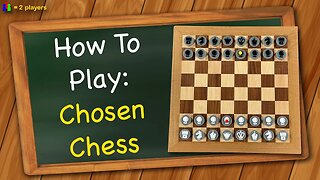How to play Lost Cities
Learn the rules to the card game Lost Cities quickly and concisely - This visually rich video has no distractions, just the rules.
Don't own the game?
Buy it here: https://amzn.to/2YbYZdN (This Amazon Affiliate link directly supports me)
RULES:
The object of the game is to have the most points after 3 rounds. Setup. Layout the board horizontally between the players. Shuffle the deck and deal 8 cards to each player. Players look at their own cards but keep them hidden from their opponent. Place the deck face down next to the board as a draw deck. Players alternate taking turns and the oldest player goes first.
On your turn you may either discard one card from your hand face up to its corresponding discard pile as making sure the color of the card matches the color of the map on the game board. OR, or you place a card from your hand face up into one of your columns.
Your card columns will match the 5 colored maps on the game board and descend towards you. Each new card played must have a higher value than the most recent card placed. Place the cards overlapping each other so each number is visible. You are allowed to skip numbers but you may not place cards in between cards already in play. If you skip a number in a column you may not play it later.
There are 3 wager cards of each color, these can only be placed at the start of each column, after that the numbers ascend from 2 to 10. As soon as you play a numbered card in a column, you may not play a wager card in the same column.
After you play a card to a column or discard a card, you draw a new card either from the top of the draw deck or from the top of any discard pile. You may not draw the same card you just discarded. Once you draw your turn ends and your opponent takes a turn.
The game ends immediately when the last card of the draw deck is drawn. At any time, players are allowed to fan out the draw deck, but not look at the card faces, to see how many cards are left. When the game ends you score points.
Each column you place at least one or more cards has an expedition costs of -20 points. If a column has zero cards in it you neither gain or lose points. Each number card in a column gives you its face value in points and are added together with all the number cards in the column.
Wager cards in a column multiply your points either positively or negatively for that column. One wager card doubles your columns value, 2 wager cards triple it, and 3 wager cards quadruple it. After you multiple, if any column has 8 or more cards in it, you receive a bonus 20 points on top of it all. Add all the columns together and write down each players total.
For example: The sum in the first column is 23. Subtract 20 points for the expedition cost and you’re left with 3. The next column has no cards in it, so it costs 0 and gives you 0. The next column only has a wager card in it. So because you started a column it, your expedition cost is 20 points, then the single wager card doubles this to -40 points. The next column has 15 points, subtract 20 for the expedition cost giving you -5, then multiply it by 2 because of the wager card, bringing this columns total to -10 points. Finally, your last column has a sum of 35, subtracting 20 for the expedition cost brings it down to 15, then you multiply the total by 3 because it has 2 wager cards in it, which equals 45 points. This column has 8 cards in it so you get an additional 20 points. Your total for the round is 18 points.
Write down each players total, gather up all the cards, shuffle and play again. The player with the highest total score goes first in the next game. If it is a tie, then then alternate who goes first. The player with the most points after 3 rounds wins.
-
 1:19
1:19
Triple S Games
8 months ago $0.03 earnedHow to play Chosen Chess
452 -
 UPCOMING
UPCOMING
China Uncensored
1 hour agoChina's Military Deployed Right Next to NATO and EU Border
4283 -
 UPCOMING
UPCOMING
Exploring With Nug
3 hours agoThe End Is Near! Let's Try Some New Things! Livestream Hangout! 7-13-2024
109 -
 1:22:42
1:22:42
Michael Franzese
5 hours agoWhat’s really happening with Biden and the Democrats | Michael Franzese LIVE! | Ep. 11
23.1K75 -
 39:53
39:53
Destene and Brandon
1 hour agoPregnant with the FLU | Pool updates | Home Refresh After the Holidays & MORE | Vlog
1K2 -
 20:15
20:15
Russell Brand
1 day agoThe Left LOSE IT After Clooney “BETRAYS” Biden
112K291 -
 13:40
13:40
JoBlo Horror Originals
1 day agoPennywise's Greatest Hits: Scares, Kills, & Iconic Moments
9371 -
 12:51
12:51
TimcastIRL
7 hours agoThe View DEFENDS Biden POOPING His Pants, Whoopi Says SHE DOES IT TOO In Hilarious Clip
52.3K98 -
 5:04:23
5:04:23
Nerdrotic
1 day ago $103.09 earnedACOLYTE Shills COPE! Woke Hollywood Regret, Marvel TRASH | Friday Night Tights 310, w/ It'sAGundam
153K104 -
 17:17
17:17
ROSE UNPLUGGED
1 day agoDinesh D'Souza: Spiritual Revision of Your Place in the World
873